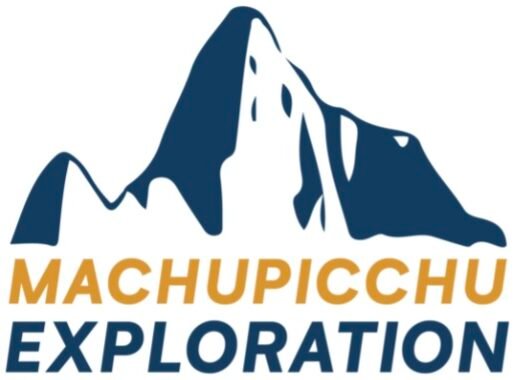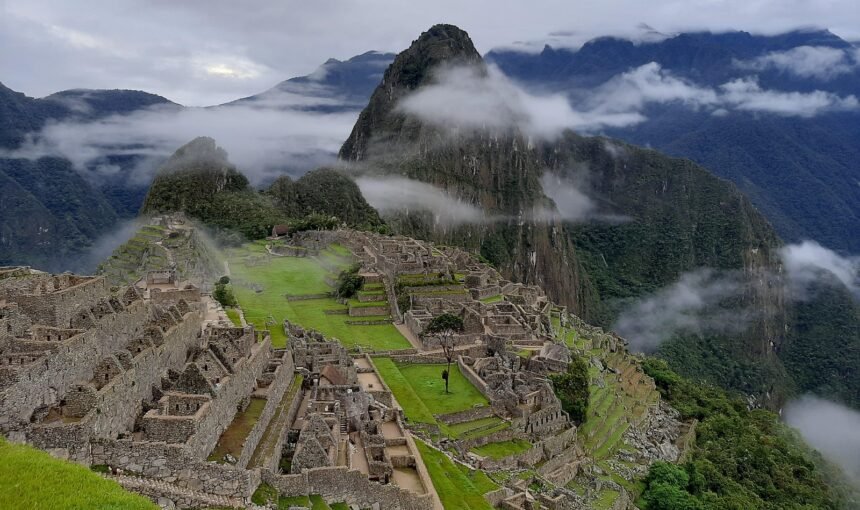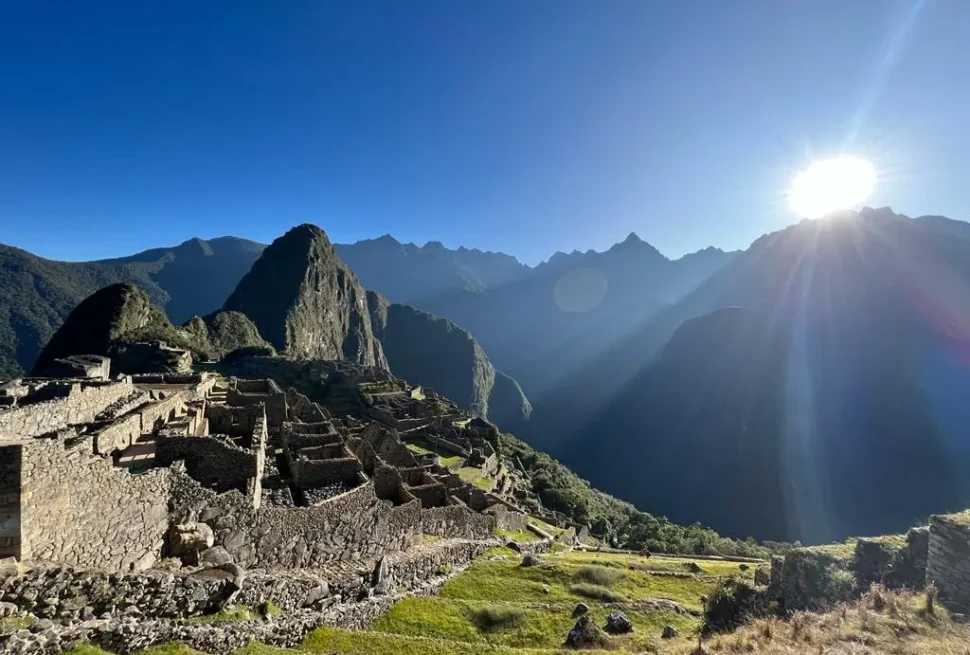If you’re planning a visit to Machu Picchu, you’re likely to have many questions about this iconic site. Here are some of the most frequently asked questions about Machu Picchu, along with their answers:
What is Machu Picchu?
Machu Picchu is an ancient Incan city located high in the Andes Mountains of Peru. It was built in the 15th century and abandoned just over 100 years later during the Spanish Conquest. Today, it is a UNESCO World Heritage Site and one of the most popular tourist destinations in South America.
How do I get to Machu Picchu?
The easiest way to get to Machu Picchu is to take a train from Cusco to the town of Aguas Calientes, also known as Machu Picchu Pueblo. From there, you can take a bus or hike up to the Machu Picchu archaeological site.
Do I need a guide to visit Machu Picchu?
While it’s not required to have a guide to visit Machu Picchu, it can enhance your experience and help you better understand the history and significance of the site. Guided tours are available at the entrance to the site, or you can arrange for a private guide in advance.
Can I hike to Machu Picchu?
Yes, it’s possible to hike to Machu Picchu. The most popular route is the Inca Trail, which takes four days to complete and requires a permit. Other options include the Salkantay Trek and the Lares Trek.
What should I wear to visit Machu Picchu?
It’s important to wear comfortable, breathable clothing and sturdy walking shoes or hiking boots when visiting Machu Picchu. Additionally, you should bring a hat, sunscreen, and insect repellent. Be prepared for variable weather conditions, as it can be hot and sunny one moment and cold and rainy the next.
Questions on the History of Machu Picchu
Who lived in Machu Picchu?
Machu Picchu was built by the Incas, a civilization that lived in Peru between the 12th and 16th centuries. It is believed that the city was built during the 15th century and was inhabited by Inca nobles and their attendants.
What was the purpose of Machu Picchu?
The exact purpose of Machu Picchu is not known, but it is believed to have been a royal estate for the Inca emperor Pachacuti. It may have also served as a religious center, as there are many temples and shrines located within the city.
How did the Incas use Machu Picchu?
The Incas used Machu Picchu as a retreat for the royal family and as a place for religious ceremonies. It was also likely used as a center for agricultural production, as there are terraces and irrigation systems located within the city.
Why was Machu Picchu abandoned?
The exact reason for the abandonment of Machu Picchu is not known, but it is believed to have been abandoned during the Spanish conquest of Peru in the 16th century. The Incas may have left the city to avoid capture by the Spanish, or it may have been abandoned due to disease or famine.
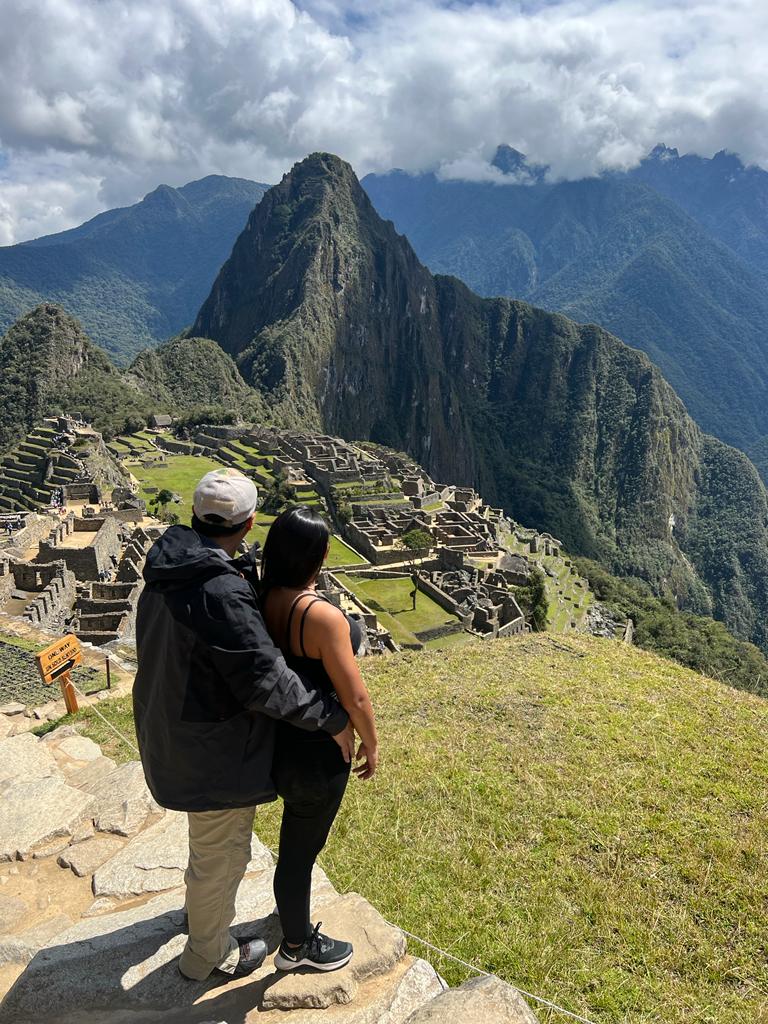
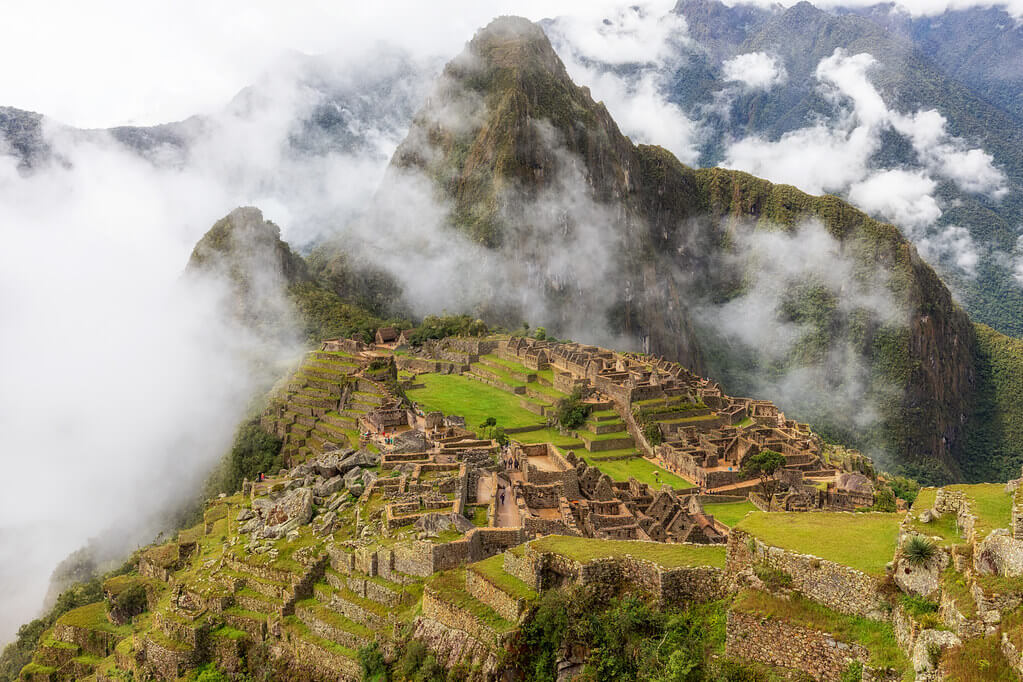
How was Machu Picchu rediscovered?
Machu Picchu was rediscovered by American explorer Hiram Bingham in 1911. Bingham was led to the city by local farmers, who had been aware of its existence for many years.
What artifacts have been found at Machu Picchu?
Many artifacts have been found at Machu Picchu, including pottery, jewelry, and tools. Some of the most notable artifacts include the mummies of several Inca nobles, which were found in a tomb located within the city.
What is the significance of the stonework at Machu Picchu?
The stonework at Machu Picchu is considered to be some of the finest examples of Inca architecture. The stones were cut and shaped to fit together perfectly, without the use of mortar. This technique is known as ashlar, and it was used extensively throughout the city to create structures that are both beautiful and highly functional. The stonework at Machu Picchu is a testament to the skill and ingenuity of the Inca people.
Frequently Asked Questions About the Geography of Machu Picchu
What is the climate like at Machu Picchu?
The climate at Machu Picchu is generally mild and humid. The rainy season runs from November to March, while the dry season runs from April to October. Temperatures at Machu Picchu typically range from the mid-50s to mid-70s Fahrenheit, depending on the time of year.
What are the flora and fauna in the area?
The area surrounding Machu Picchu is home to a wide variety of flora and fauna. Some of the most common plants include orchids, bromeliads, and ferns. Animal species that can be found in the area include spectacled bears, Andean condors, and many different types of birds.
What is the Urubamba River and how does it relate to Machu Picchu?
The Urubamba River is a major river in Peru that runs through the Sacred Valley and past Machu Picchu. The river played an important role in the Incan civilization, providing a source of water for crops and livestock.
What other archaeological sites are in the area?
There are several other archaeological sites in the area surrounding Machu Picchu, including the ruins of Ollantaytambo and Pisac. These sites offer a glimpse into the rich history and culture of the Incan people.
Is there a limit on the number of visitors allowed at Machu Picchu?
Yes, there is a daily limit on the number of visitors allowed at Machu Picchu in order to help preserve the site. The limit is currently set at 2,500 visitors per day, and tickets must be purchased in advance.
Questions on Language in and Around Machu Picchu
What other Quechua words might I hear around Machu Picchu?
Quechua is still spoken by many people in Peru, particularly in the Andean highlands. Around Machu Picchu, you may hear several Quechua words such as “pacha” which means “earth” or “world”, “wasi” which means “house” or “home”, “tika” which means “flower”, “sumaq” which means “beautiful” or “good”, “qenti” which means “hummingbird”, and “k’uychi” which means “rainbow”.
Are there tour guides who speak languages other than Spanish or English?
Yes, there are tour guides in Cusco who speak other languages besides Spanish and English. Due to the high volume of international tourists who visit Cusco and Machu Picchu, it is common to find tour guides who speak languages such as French, German, Italian, Portuguese, and Japanese. Some tour companies may also offer guided tours in other languages depending on the demand.
What is the history of Quechua in Peru?
Quechua is an indigenous language spoken in Peru, Bolivia, Ecuador, and parts of Colombia, Chile, and Argentina. It was the language of the Inca Empire, which ruled over much of the Andes region in the 15th and 16th centuries. Despite attempts to suppress the language during the colonial period, Quechua has survived and continues to be spoken by millions of people today. In fact, it is one of the most widely spoken indigenous languages in the Americas. Today, Quechua is recognized as an official language in Peru, alongside Spanish and several other indigenous languages.
Common Questions About the Logistics of Reaching Machu Picchu
What documents do I need to enter Machu Picchu?
To enter Machu Picchu, you will need your passport or a valid form of identification. Additionally, if you plan to hike the Inca Trail, you will need a permit, which you should obtain in advance through a licensed tour operator.
Is it safe to travel to Machu Picchu?
Yes, it is generally safe to travel to Machu Picchu and the surrounding areas. However, as with any travel destination, it is always important to be aware of your surroundings and take precautions to ensure your safety. You should also be prepared for the high altitude, which can cause altitude sickness in some people.
What are the accommodations like in Aguas Calientes?
Aguas Calientes, also known as Machu Picchu Pueblo, offers a range of accommodations to suit different budgets and preferences. There are basic hostels, mid-range hotels, and luxury lodges. Keep in mind that accommodations can fill up quickly, especially during peak travel season, so it’s a good idea to book in advance.
What is the difference between the Machu Picchu Mountain and Huayna Picchu trek?
Both Machu Picchu Mountain and Huayna Picchu offer stunning views of Machu Picchu, but they are different hikes. Machu Picchu Mountain is a longer and less steep hike, while Huayna Picchu is a shorter but steeper hike. Additionally, the number of visitors allowed on each trail is limited, so it’s important to book your trek in advance.
Frequently Asked Questions About Hiking/Trekking to Machu Picchu
What is the best way to prepare for a trek to Machu Picchu?
To prepare for a trek to Machu Picchu, it’s important to start with a good level of fitness. You should also acclimate to the high altitude by spending a few days in Cusco before starting your trek. It’s also recommended to bring appropriate gear, such as sturdy hiking boots, warm clothing, and a good quality backpack. It’s also important to stay hydrated and eat well to maintain your energy levels during the trek.
Read more: Machu Picchu in December.
What are the physical requirements for trekking to Machu Picchu?
Trekking to Machu Picchu requires a moderate to high level of physical fitness. The trek involves several days of hiking, often at high altitude and over uneven terrain. It’s important to be in good health and have a certain level of stamina to complete the trek. If you have any health concerns or pre-existing conditions, it’s important to consult with your doctor before embarking on the trek.
What are the benefits of hiring a guide for a trek to Machu Picchu?
Hiring a guide for a trek to Machu Picchu can provide many benefits, including access to local knowledge and expertise, as well as added safety and security. A guide can also help you with logistics, such as arranging transportation, accommodations, and meals. Additionally, a guide can provide historical and cultural insights about the area, enhancing your overall experience.
What are the camping arrangements like on a trek to Machu Picchu?
Camping arrangements on a trek to Machu Picchu vary depending on the route and tour company. Generally, camping involves setting up tents in designated campsites along the trekking route. Most tour companies provide all necessary camping equipment, such as tents, sleeping bags, and sleeping pads. Meals are typically prepared by a cook and served in a communal dining tent.
What is the difference between the Inca Trail and the Salkantay trek?
The Inca Trail and the Salkantay trek are two different routes to Machu Picchu. The Inca Trail is a 4-day trek that follows the ancient Inca road system, passing through archaeological sites and offering stunning views of the Andes Mountains. The Salkantay trek is a more challenging 5-day trek that takes you through high-altitude mountain passes and offers breathtaking views of the Salkantay mountain range. While both treks end at Machu Picchu, the Inca Trail is more popular and requires a permit, while the Salkantay trek is less crowded and does not require a permit.
What is the best time to visit Machu Picchu?
The best time to visit Machu Picchu is during the dry season, which runs from May to October. During this time, the weather is generally sunny and clear, with minimal rainfall. The months of June, July, and August are the busiest times to visit, as they coincide with summer vacation for many people.
If you want to avoid the crowds, consider visiting Machu Picchu during the shoulder seasons of May or October. During these months, the weather is still pleasant, and there are fewer tourists. However, it’s worth noting that Machu Picchu can be visited year-round, so if you’re unable to travel during the dry season, don’t worry – you can still enjoy this incredible destination. Just be sure to pack appropriate clothing for the weather conditions you may encounter.
Frequently Asked Questions About Machu Picchu Tours
What are the different types of tours available for Machu Picchu?
There are several types of tours available for Machu Picchu, depending on your preferences and budget. Some of the most popular options include group tours, private tours, trekking tours, and luxury tours. Group tours are generally the most affordable and offer the opportunity to meet new people, while private tours offer more flexibility and personalized attention. Trekking tours are ideal for adventurous travelers who want to hike the Inca Trail, while luxury tours provide a high-end experience with top-notch accommodations and amenities.
What is included in a typical Machu Picchu tour?
A typical Machu Picchu tour usually includes transportation to and from Cusco or Ollantaytambo, entrance tickets to the Machu Picchu site, a guided tour of the ruins, and sometimes lunch or snacks. Depending on the type of tour you choose, additional activities or accommodations may be included as well.
Are there any restrictions on visiting Machu Picchu?
Yes, there are some restrictions on visiting Machu Picchu to help preserve the site and ensure visitor safety. For example, visitors are not allowed to bring in any food or drinks (except for water), and large backpacks or bags are not permitted. Visitors are also required to follow designated paths and stay within certain areas of the site.
Do you need a guide to visit Machu Picchu?
While it is not required to hire a guide to visit Machu Picchu, it is highly recommended. A guide can provide valuable information about the history and significance of the site, as well as help you navigate the complex and often crowded ruins.
What are the benefits of hiring a guide for Machu Picchu?
Hiring a guide for Machu Picchu can enhance your experience in several ways. Guides are knowledgeable about the history and culture of the site, and can provide context and insights that you might not get on your own. They can also help you navigate the sometimes confusing layout of the ruins, and answer any questions you may have along the way.
What are the best tour companies for Machu Picchu?
There are many reputable tour companies that offer Machu Picchu tours, so it’s important to do your research and choose one that meets your needs and budget. Some of the most popular tour companies include Peru Rail, Intrepid Travel, G Adventures, and Inca Trail Reservations. It’s also a good idea to read reviews and ask for recommendations from friends or travel forums.
Questions on Accommodation and Facilities at Machu Picchu
Are there hotels or lodges near Machu Picchu?
Yes, there are several hotels and lodges located near Machu Picchu. The town of Aguas Calientes, also known as Machu Picchu Pueblo, is the closest town to the site and offers a range of accommodation options, including hotels, lodges, and hostels. Some of the more popular hotels in Aguas Calientes include the Sumaq Machu Picchu Hotel, Inkaterra Machu Picchu Pueblo Hotel, and the Belmond Sanctuary Lodge.
What are the accommodation options for visitors to Machu Picchu?
Visitors to Machu Picchu have a range of accommodation options to choose from. In addition to the hotels and lodges in Aguas Calientes, there are also options for camping and glamping in the area. For example, the Inca Trail offers camping options for those who want to hike to Machu Picchu, and there are several glamping sites in the area that offer luxury tents and amenities.
Are there restaurants or cafes at Machu Picchu?
There are no restaurants or cafes located within the Machu Picchu archaeological site itself. However, there are several options for dining in Aguas Calientes, including restaurants, cafes, and bakeries. Many of the hotels in Aguas Calientes also offer dining options for their guests.
What facilities are available at Machu Picchu for visitors?
Machu Picchu offers several facilities for visitors, including restrooms and souvenir shops. There are also designated picnic areas within the site where visitors can enjoy a meal or snack. Additionally, there are several guided tours available for visitors who want to learn more about the history and significance of Machu Picchu.
